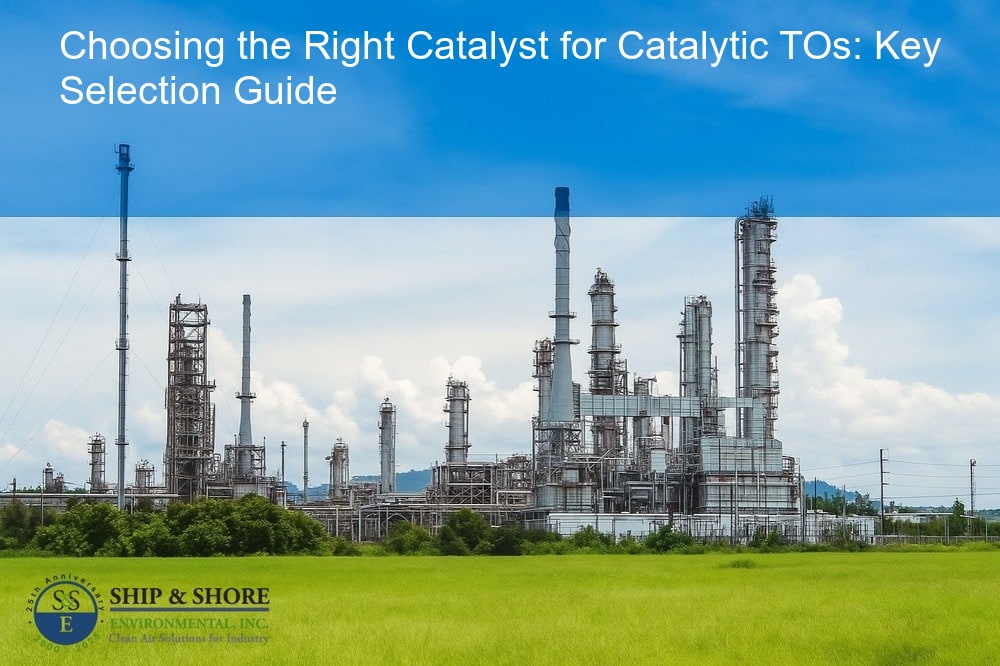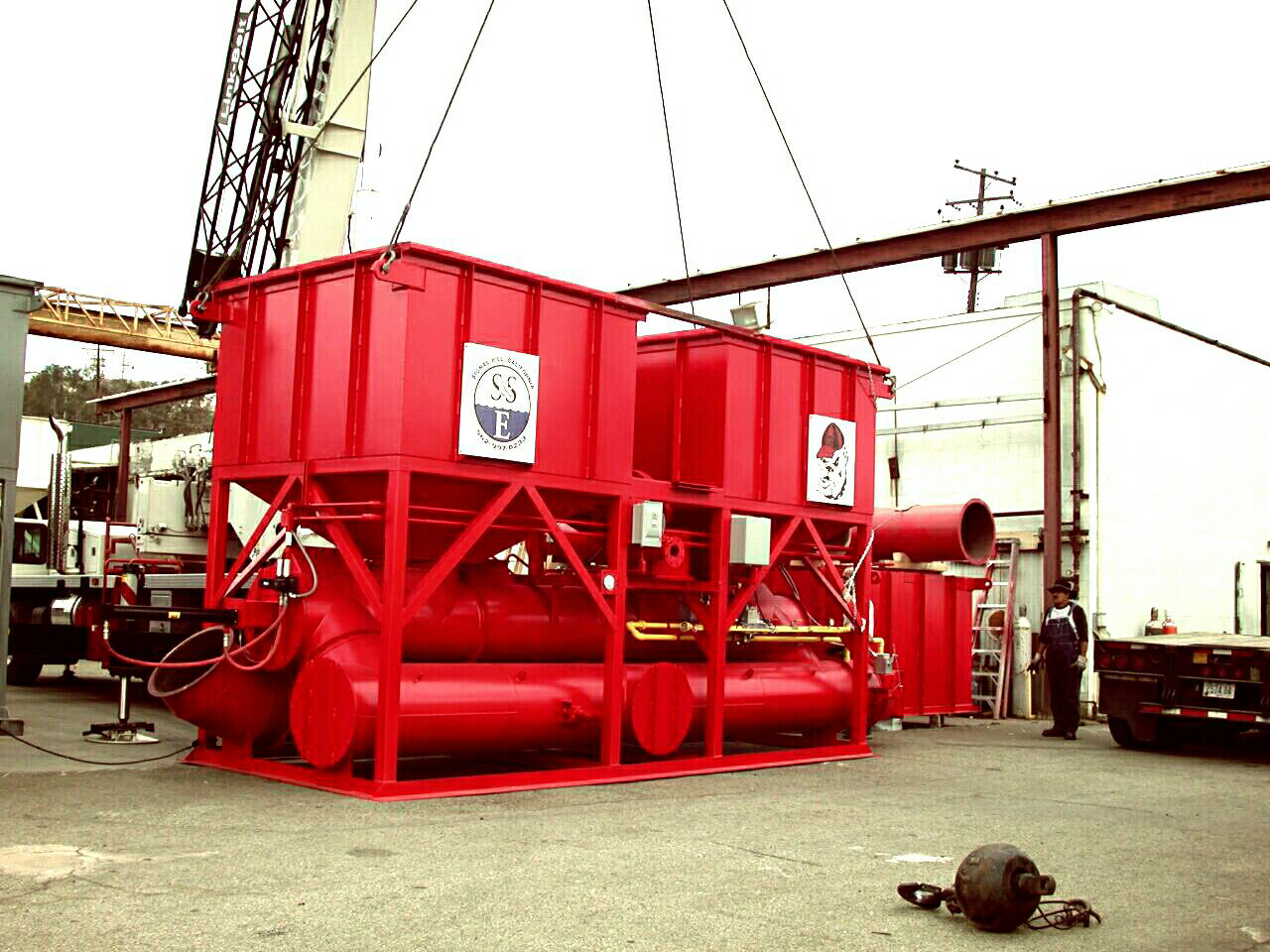
Mastering the Art of Choosing the Right Catalyst for Catalytic TOs
August 1, 2025 6:13 amThe Significance of Catalytic TOs in Industry
Choosing the right catalyst for catalytic TOs is a decision that can significantly impact industrial processes, both in terms of efficiency and compliance with environmental regulations. Catalytic Thermal Oxidizers (TOs) are critical in managing and reducing hazardous air pollutants in various industries. They convert volatile organic compounds (VOCs) and other harmful emissions into less harmful substances through chemical reactions facilitated by a catalyst. The importance of these systems cannot be overstated, as they play a pivotal role in maintaining air quality and ensuring that industries adhere to stringent environmental standards.
Understanding the Role of a Catalyst in Catalytic TOs
In the realm of catalytic TOs, the catalyst serves as the backbone of the entire operation. It accelerates chemical reactions without being consumed in the process. By lowering the activation energy required for the reaction, the catalyst ensures that VOCs and other pollutants are oxidized effectively and efficiently. The type of catalyst selected can drastically influence the performance of the thermal oxidizer, affecting both its efficiency in pollutant removal and its operational costs. Whether we are dealing with metal catalysts like platinum and palladium or other alternative materials, each has unique properties that make it more or less suitable for specific applications.
The Need for Discernment: Why the Right Catalyst Matters
The process of choosing the right catalyst for catalytic TOs is far from straightforward. Several factors must be weighed carefully, including the types of emissions being treated, reaction temperatures, and the specific regulatory requirements that apply to the industry in question. A poorly chosen catalyst can result in suboptimal performance, increased operational costs, and even regulatory compliance issues. Therefore, making an informed decision requires a deep understanding of both the chemical properties of the catalysts and the particular demands of the industrial process in which they will be used.
Key Factors to Consider When Choosing the Right Catalyst for Catalytic TOs
When selecting a catalyst for catalytic thermal oxidizers, one must take into account several critical factors. Firstly, the chemical composition of the catalyst is paramount. Catalysts are often crafted from noble metals or metal oxides, each offering distinct advantages and limitations. Hence, it’s essential to match the catalyst’s chemical properties to the specific industrial application.
Another important factor is the catalyst’s surface area and porosity. These characteristics affect the catalyst’s ability to facilitate reactions by providing ample surface for the molecules to interact. Additionally, we need to consider the temperature stability and longevity of the catalyst. Catalysts must withstand the operational temperatures of the TO system while maintaining their activity over extended periods.
Impact of Catalyst Selection on Industrial Output and Environmental Compliance
Choosing the right catalyst for catalytic TOs is not only vital for operational efficiency but also for adhering to environmental regulations. Effective catalysts enhance the oxidation process, leading to a significant reduction in volatile organic compounds (VOCs) and other pollutants. This directly impacts our facility’s ability to meet stringent environmental standards.
Moreover, the right catalyst can markedly improve industrial output. Efficient catalysts minimize downtime and maintenance costs, thereby boosting productivity. For example, optimized catalytic performance can lead to faster processing times and reduced energy consumption. This is particularly crucial in industries where high throughput and minimal operational interruptions are key to maintaining competitiveness.
- Reduction in emissions and pollutants
- Enhanced industrial productivity and efficiency
- Compliance with environmental regulations
- Cost-saving on maintenance and operational expenditures
Case Studies and Practical Implications: The Difference the Right Catalyst Makes
Real-world examples highlight the importance of choosing the right catalyst for catalytic TOs. In one instance, a manufacturing facility experienced frequent operational halts owing to inefficient catalysts. Upon switching to a catalyst with better thermal stability and higher surface area, the facility saw a marked improvement in both operational uptime and environmental compliance. Emissions were cut by 30%, and maintenance intervals were extended, resulting in substantial cost savings.
In another case, a chemical plant struggling with VOC emissions managed to achieve compliance with environmental regulations after adopting a more suitable catalyst. This not only helped them avoid hefty fines but also bolstered their reputation as a responsible and forward-thinking organization.
Practical implications of choosing the right catalyst are multidimensional. Not only does it enhance the overall efficiency of our TO systems, but it also solidifies our commitment to sustainability and environmental stewardship. By making informed decisions, we can ensure our processes are both economically and environmentally sound.
Did you know? Selecting the right catalyst for catalytic turnover (TO) processes can significantly enhance industrial efficiency and environmental compliance.
Reinforcing the Value of Careful Catalyst Selection
When it comes to the efficiency and success of our catalytic thermal oxidizers (TOs), choosing the right catalyst for catalytic TOs cannot be overstated. Our commitment to rigorous selection processes ensures that we not only meet but exceed industry standards and environmental regulations. A well-chosen catalyst maximizes the efficacy of chemical reactions, reducing harmful emissions and optimizing operational output. This diligence in selection bolsters our ability to deliver on promises of quality and sustainability, reinforcing our position as a leader in the industry.
Long-Term Benefits of Choosing the Right Catalyst for Catalytic TOs: Reputation, Compliance, and Sustainability
The impact of choosing the right catalyst for catalytic TOs extends beyond immediate operational gains. Over time, the advantages compound, yielding significant benefits in terms of reputation, regulatory compliance, and environmental sustainability. By consistently employing the most effective catalysts, we ensure that our solutions remain at the forefront of technological advancement and environmental stewardship. This proactive approach not only safeguards our reputation but also aligns us with global trends emphasizing sustainability and responsible industrial practices.
Moreover, adhering to stringent compliance standards is simplified when the optimal catalyst is in use. Efficient catalysts minimize the risk of regulatory breaches and costly penalties, fostering a stable and predictable operational environment. Our adherence to best practices in catalyst selection further solidifies our commitment to regulatory excellence, ensuring continued trust and confidence from our clients and stakeholders.
Moving Forward: Making Informed Decisions in Catalyst Selection for Catalytic TOs
As we look ahead, the importance of making informed decisions in catalyst selection for catalytic TOs remains paramount. Every choice we make is informed by extensive research, industry insights, and practical outcomes. Our case studies are a testament to the tangible benefits of meticulous catalyst selection, showcasing real-world applications and successes.
By maintaining a steadfast focus on innovation and efficacy, we are well-positioned to navigate the evolving landscape of industrial requirements and environmental expectations. Our strategic approach to catalyst selection not only enhances the efficiency and effectiveness of our solutions but also aligns with our broader goals of sustainability and industry leadership. In embracing these principles, we reaffirm our dedication to excellence and our commitment to paving the way for a cleaner, more efficient industrial future.
FAQ
What are the main considerations when selecting a catalyst for catalytic TOs?
In choosing a suitable catalyst for catalytic thermal oxidizers, several factors are paramount. It’s essential to evaluate the specific chemical reactions involved, as well as the operating conditions the catalyst will be subjected to. Temperature tolerance, poison resistance, and longevity also play critical roles. Furthermore, the catalyst’s efficiency in converting pollutants to less harmful substances must align with environmental compliance standards.
How does catalyst selection impact industrial output?
The choice of catalyst directly influences the efficiency of catalytic thermal oxidizers, which in turn affects overall industrial productivity. An optimal catalyst ensures maximum contaminant breakdown, leading to fewer operational interruptions and a more stable production process. Consequently, this enhances output quality and helps maintain consistent operational performance.
Can you provide an example of how the right catalyst choice has made a difference?
Indeed, in our published case studies, we highlight instances where the appropriate catalyst significantly improved both environmental and economic outcomes. For example, a facility experienced a 15% increase in production efficiency after switching to a more suitable catalyst, leading to reduced emissions and compliance with stringent environmental regulations. This change also resulted in operational cost savings over time.
What are the long-term benefits of selecting the appropriate catalyst for my catalytic TO?
Over the long term, a well-selected catalyst contributes to a robust reputation for quality and environmental responsibility. It ensures compliance with evolving regulations and minimizes the risk of costly non-compliance penalties. Additionally, it supports sustainable practices by consistently reducing harmful emissions, thereby playing a part in the collective effort to protect the environment.
How does Ship & Shore Environmental ensure informed catalyst selection for catalytic TOs?
Our approach to catalyst selection is backed by an array of in-depth research, industry expertise, and practical experience. By staying abreast of technological advances and environmental standards, we assure that our choices are both informed and forward-thinking. We apply analytical rigor to every decision, and our track record of successful installations stands as a testament to our commitment to excellence in catalyst selection.
Categorised in: Blog

